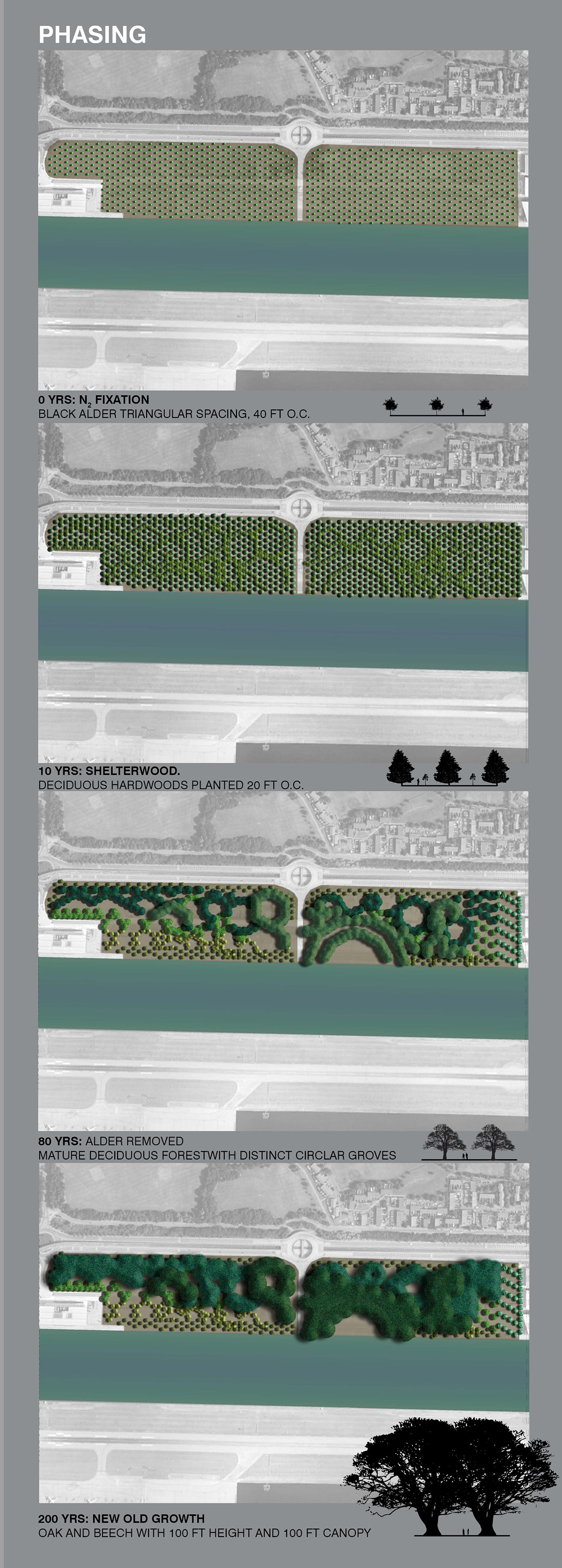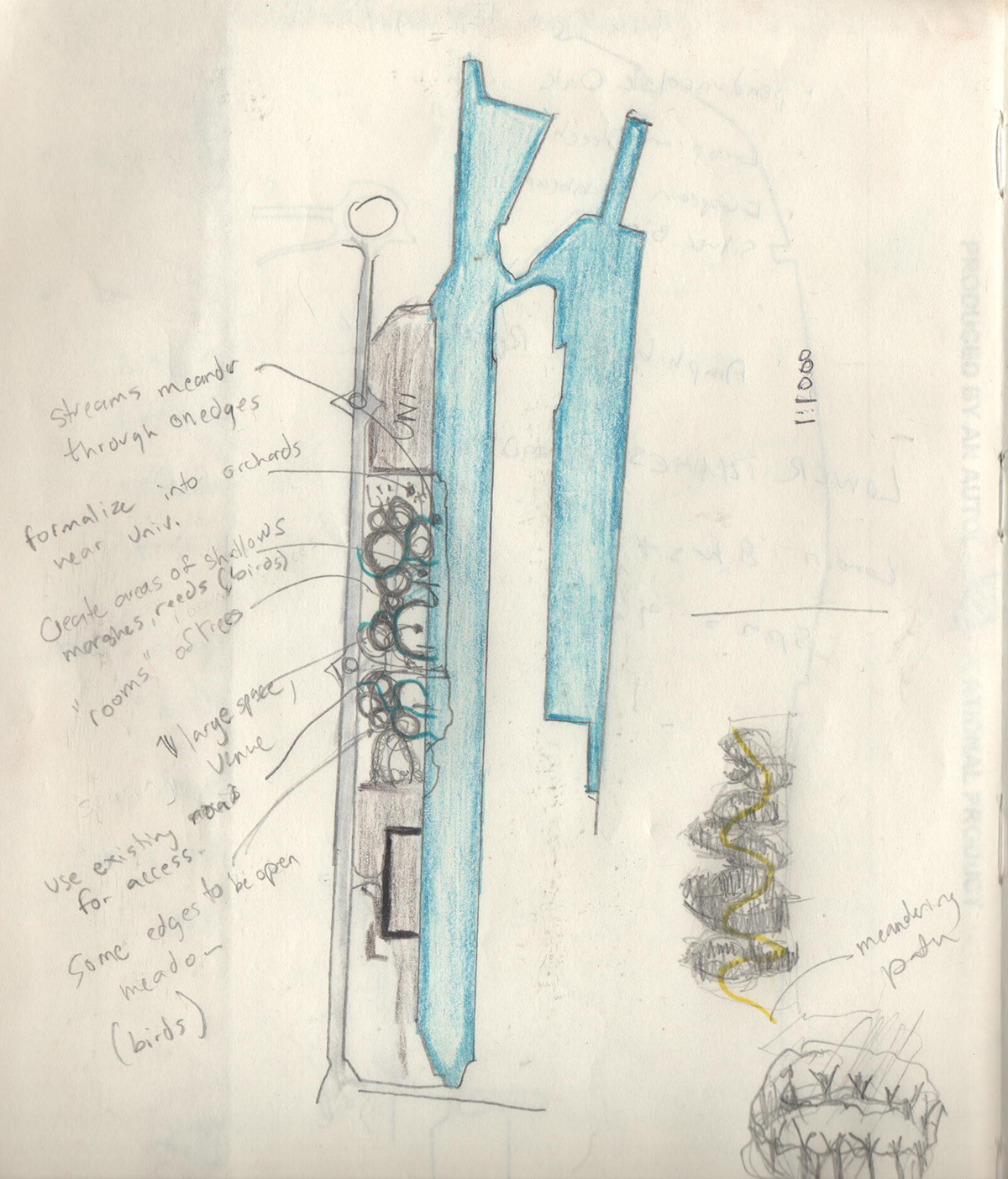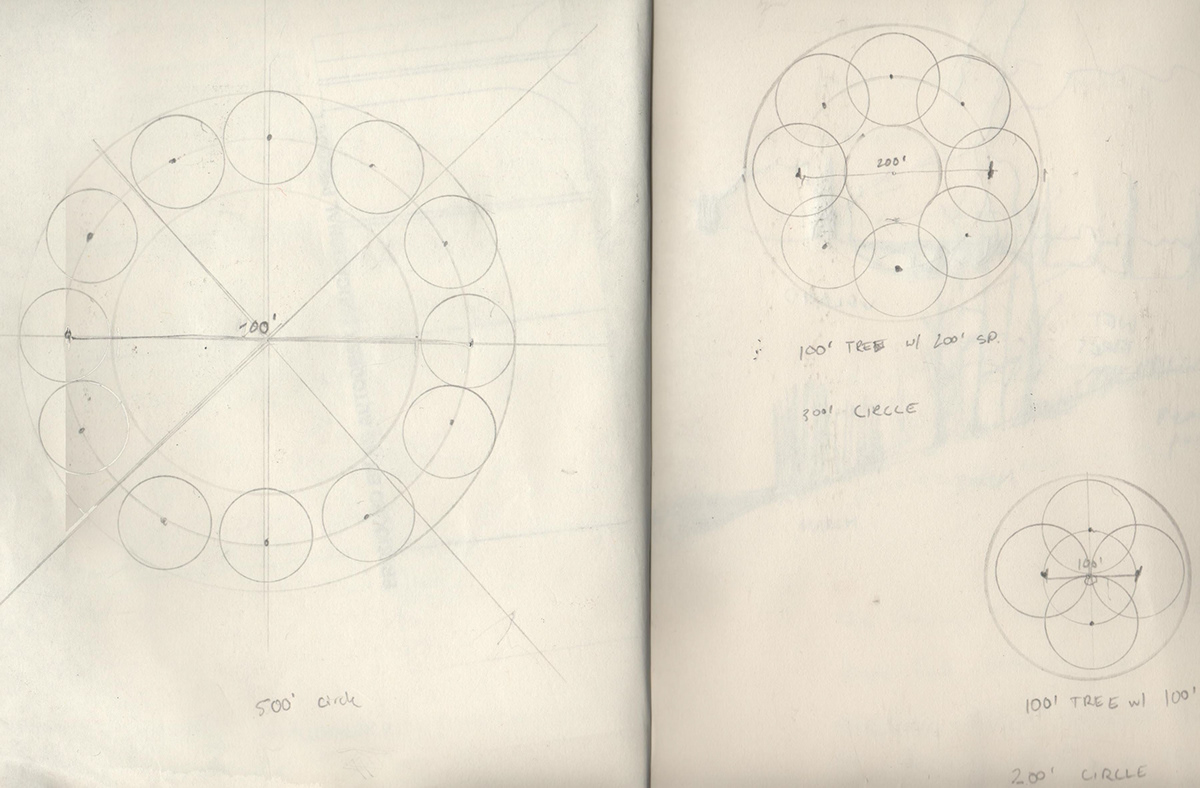
The Royal Docks lie on the outskirts of East London and comprise an area roughly the size of Central Park. These now decommissioned docks are the proposed site of new development by the City of London. Royal Albert Dock, on the eastern side of the Royal Docks, is the largest parcel of open space and is a critical link between the existing network of green infrastructure and the water’s edge.
At the center of the Royal Docks is London City Airport. Receiving 120,000 flights per year, the noise created by this airport can be heard in the surrounding area, including the open space of Royal Albert Dock. The conventional strategy for decreasing airport noise is to build a wall so that one cannot see the runway or the aircraft. This vertical solution does not address airplane noise created by planes flying overhead.
This reforestation project quiets airport noise by planting a forest of deciduous hardwood trees with dense canopies in a series of circular groves. The phased scheme of reforestation begins with Black Alder, Alnus glutinosa, a species which will grow qucikly, fix nitrogen on the disturbed site, and shelter the slow growing Oak, Beech, and Hornbeam. New wetland zones defined by groupings of birch will encourage and shelter threatened conservation status birds. In sixty to one hundred years the short-lived Black Alder will be removed and the mature, open form of the groves will be evident. Each grove will have different amount of overhead exposure and density, creating spaces in which the unique beauty of each species can be appreciated for its form and branching. The groves will vary in size and capacity. Some will be dense and sheltering, others will be open and large enough to accommodate a large crowd. As the trees mature, the strict geometry of the planting will become less apparent and the groves will take on the more naturalistic appearance of a successional urban forest.

London City Airport: Flight Trajectories and Daytime Noise Contours.

Perspective: Entering a mature beech grove. trees planted in tight groupings grow tall and straight. Spacing effects form.


Mapping: open space, woodland, agricultural soil, and sound contours across the Royal Docks.

Process: Sketching the volumes, paths, and programs of the space.




References
Special thanks to Joe. R McBride , UC Berkeley Professor of Urban Forestry for consulting.
GIS and mapping
Thames GIS http://www.thamesrecgis.org.uk/
London Planning http://data.london.gov.uk/
Ordnance Survey http://www.ordnancesurvey.co.uk/
Magic map http://www.magic.gov.uk/
Natural England http://www.gis.naturalengland.org.uk/pubs/gis/tech_aw.htm
British Geological Survey Metadata http://www.bgs.ac.uk/discoverymetadata/
London Natural History Society http://www.lnhs.org.uk/
Greenspace for Greater London http://www.gigl.org.uk/
Thames
Health Depts Recreational Study http://www.hpa.org.uk/webc/hpawebfile/hpaweb_c/1194947405865
Conservation
London Biodiversity Partnership http://www.lbp.org.uk/habitattargets.html
Natural England http://www.naturalengland.org.uk/
Biodiversity Action Reporting system http://ukbars.defra.gov.uk/archive/default.asp
Joint Nature Conservation Committee http://jncc.defra.gov.uk/
Royal Docks History http://www.royaldockstrust.org.uk/rdhist.htm
London City Airport
LCY Noise Action Plan http://www.londoncityairport.com/content/pdf/LCY%20Noise%20Action%20Plan%20Summary%202012.pdf
London Airspace Consultation http://www.londonairspaceconsultation.co.uk/
Noise information: http://www.pvdairport.com/corporate/environment/noise-faqs
Effects of Highway noise on wildlife:
Birds
British Trust for Ornithology http://www.bto.org/
Royal Society for the Protection of Birds https://www.rspb.org.uk/
Forestry
USDA Silvicultural systems http://www.fs.usda.gov/Internet/FSE_DOCUMENTS/fsbdev3_003618.pdf
And forest management http://www.nrs.fs.fed.us/fmg/nfmg/fm101/silv/index.htm
Black Alder Silviculture, Oxford http://forestry.oxfordjournals.org/content/83/2/163.full.pdf
Forestry Commission http://www.forestry.gov.uk/research

